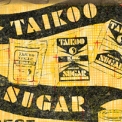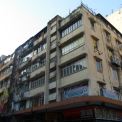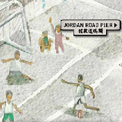Hong Kong manufacturers used to aim at export markets rather than local consumption. The scope of the markets extended from Asia to Europe, North and South America, Africa and the Pacific regions. China was the largest market by far; the British Empire was a much smaller importer in comparison. In 1934 and 1938, less than 20% of Hong Kong’s total exports went to the British Empire, whereas over 50% went to China. Therefore, the economic and political changes in China had immense effects on Hong Kong’s output and trade.
There were different markets for different products. For example, the government reported for many years that North China was the largest market for refined sugar followed by India. Preserved gingers fed markets in Britain, Australia, Holland and the United States. Tin was sold to Shanghai, Japan, Europe, the United States, Australia and Canada. Under the Imperial Preference system, knitted piece-goods, electric torches and batteries, rubber shoes and boots were exported to different regions of the British Empire such as India, Malaya, Ceylon, the West Indies and Britain, whereas knitted vests and socks were exported to the West Indies, the Strait of Malacca, Malaya and India. Lower-grade knitted goods were sold to South China, the Philippines, and the Dutch East Indies.
In the 20th century, Hong Kong manufacturers faced trade restrictions imposed by different countries. Protectionism took many forms, and the one that greatly affected Hong Kong was Imperial Preference and Textile Quotas Legislation.
There were different markets for different products. For example, the government reported for many years that North China was the largest market for refined sugar followed by India. Preserved gingers fed markets in Britain, Australia, Holland and the United States. Tin was sold to Shanghai, Japan, Europe, the United States, Australia and Canada. Under the Imperial Preference system, knitted piece-goods, electric torches and batteries, rubber shoes and boots were exported to different regions of the British Empire such as India, Malaya, Ceylon, the West Indies and Britain, whereas knitted vests and socks were exported to the West Indies, the Strait of Malacca, Malaya and India. Lower-grade knitted goods were sold to South China, the Philippines, and the Dutch East Indies.
In the 20th century, Hong Kong manufacturers faced trade restrictions imposed by different countries. Protectionism took many forms, and the one that greatly affected Hong Kong was Imperial Preference and Textile Quotas Legislation.
Documents
- Textile Quotas Legislation (1937)
- Empire Quota for Textiles and Rayon Goods (1934)
- Quantities and Values of Principal Articles of Exports During the Years 1937 and 1938
- Percentage of Total Exports sent to Empire and Foreign Countries (1939)
- Production (1932)
- Production (1933)
- Production (1935)
- Production (1937)
- Imperial Preference (1932)
- Imperial Preference (1933)
- Increased China Import Duties (1934)
- Imperial Preference (1937)
- Imperial Preference (1938)





